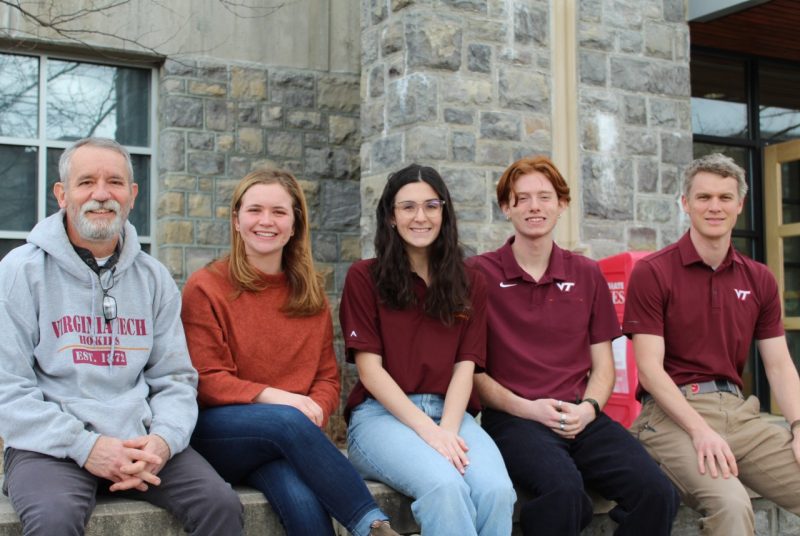
By David Fleming
In a fourth grade classroom, students tasked with acting out the dynamics of a forest fire decided to have a little fun.
“I wasn’t expecting it to turn into a game of tag,” said senior Josh Long, an environmental conservation and society major in the College of Natural Resources and Environment. “I had to tell them that they were a forest, and forests aren’t supposed to move. But once the kid pretending to be the fire started coming toward the kids playing trees, they couldn’t help it.”
Such a reaction – where students are engaged, excited, and having more than a little fun – is one of the goals of the Virginia Forestry Educational Foundation (VFEF) Undergraduate Internship Program. This semester-long course aims to provide undergraduate students in the Department of Forest Resources and Environmental Conservation with critical communication skills while sparking curiosity for the next generation of environmental conservationists.
The participating forestry students design, workshop, trial, and, finally, present on a specific element of forest conservation to classrooms of grade school or high school students. To develop and hone their presentations, students attend weekly brainstorming sessions with faculty.
“They start by deciding what subjects related to natural resources they want to teach on,” said Alumni Distinguished Professor John Seiler, who started a similar program with Emeritus Professor Jeff Kirwan in 2001. “Then they consider how their subject fits with the Virginia Standards of Learning curriculum, and then we build from there.”
Often, the learning that occurs is a two-way street.
“Because we’re working so closely together every week, the program gives us a good space to provide honest and constructive feedback to one another,” said Assistant Professor Patrick Corey Green, who currently teaches in the internship program with Seiler. “Working with the students, trying to make them understand the importance of thinking about their audiences, and being deliberate about even the little details made me more self-reflective about my own approaches as an educator.”
For junior Jillie Alexander, the chance to work directly with professors is a highlight of the internship program.
“‘Collaborative’ is a good word for my experience,” said Alexander, who is majoring in environmental resources management. “They were so supportive and encouraging, but they also made it clear that these were our projects, that we were the ones making the decisions.”
For Alexander, that ownership of the project led to a lot of visits to arts and crafts stores. Presenting on the subjects of agroforestry, she used a model farm and then had students replicate windbreaks and silvopasture, two agroforestry practices that use trees to protect crops and livestock for farmers.
“For the high school students I presented to, I created a model with small corn plants and fake Christmas trees and a fan, and I had the students use an anemometer to measure wind speeds on the farm,” said Alexander, a recipient of the college’s Timberland Management and Investment Scholarship. “They’d take control data, and then data rounds on different numbers of trees we’d used to block the wind. Sometimes the data surprised us – increasing the number of trees in the windbreak didn’t always decrease wind speed – so we’d talk through why that might be the case.”
Alexander did the same thing with livestock, using a plastic cow and a heat lamp to simulate the silvopasture practice of using trees to protect livestock from temperature changes.
“I was surprised at how interested the students were,” said Alexander, who is from Englewood, Florida “At the outset I asked them to imagine and draw their own farms, and one group drew a UFO abducting a cow. At the end of the presentation, they had added a tree to the drawing, to protect the cow.”


